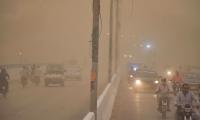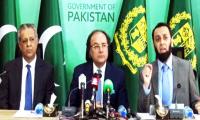Pakistan, along with the rest of the contemporary world, celebrated the new year with renewed zeal and fervour. This is a practice that we Pakistanis have made a habit of over the last seven decades. It gives us new hope of a better tomorrow. But we often end up with a sad story which generates fears of a bleak future.
The year 2014 ended up with a devastating attack on the Army Public School in Peshawar that killed over 140 people, including 132 students. This national tragedy was still fresh in our memories when the Gulshan-e-Iqbal Park incident took place in Lahore in March 2016 in which a suicide bomb killed 69 people and left 340 more injured. The attack took place on Easter Sunday. Towards the second half of the year, a suicide bomber killed over 70 people while injuring hundreds more at Quetta’s Civil Hospital on August 8. Most of the people who were killed or injured belonged to the legal fraternity.
If we look at the statistical trends, 2016 was, overall, a good year for Pakistan in terms of security. But does the degree of success on the security front provide enough justification for a better tomorrow? There is no doubt that the recovery on the security front in the post Operation Zarb-e-Azb scenario is remarkable. But where are we heading on the economic front? What’s going on in our national political theatre? Where do we stand when it comes to our ranking in the Human Development Index? The stories of bad governance, corruption scandals and political deadlocks are enough to speak for the truth.
The country, since its inception in 1947, produced over 200 million heads but failed to produce a visionary and sincere leader to build on Quaid-e-Azam’s vision of creating a land which everyone could call their own. Can we call Pakistan a land where 40 percent of the people have been living below the poverty line? Is it still that safe and secure Pakistan that our grandfathers made sacrifices for?
We should ask this question from the woman who was gang-raped in Islamabad on New Year’s Eve. The woman from Bahawalpur was gang-raped repeatedly by four men in the vicinity of Sihala police station who had promised her a job. Do we have any redressal mechanisms in place to compensate for what this woman went through?
Is Pakistan the dreamland of the 60-year-old woman Zahra who breathed her last on the floor of the Jinnah Hospital on January 2 after she was allegedly denied treatment at three state-run hospitals in Lahore? In Zahra’s Pakistan only 0.7 percent of the total GDP is allocated to maintaining the health of over 200 million Pakistanis. This is against the WHO’s standards in this respect, which range between four to five percent of the GDP.
The Quaid would be shocked to know that in his Pakistan, even seven decades after its creation, the summer still multiplies human sufferings with hours-long electricity cut while the freezing winter affects the way of life when gas runs short. Where poverty, hunger, unemployment, price hikes and diseases are all seasonal problems confronting a common man. Where infant mortality rate still stands at 76 out of 1,000 and maternal mortality rate is 78 out of 100,000.
It is astonishing to note that even in the major cities of the country, only up to 60 percent of the people have access to safe drinking water. According to Pakistan Demographic Survey, only 38 percent of the people are fully immunised against diseases. As per a study conducted by the National Nutrition Survey (NNS 2011), 40 percent of children are malnourished and 49 percent of women suffer from iron deficiencies in the country. Malnourishment, coupled with low immunisation and ignorance, proves to be more harmful when people are steeped in poverty. At least 40 percent of the people are living below the poverty line with an income of less than two dollars a day.
Reports from Tharparkar stated that 65 people committed suicide in the preceding year due to the shortage of food.
The facts and figures clearly speak the truth. Whose Pakistan is this? Does it belong to those few from the aristocracy who rule the country or those teeming millions that are being ruled?
The frequently-asked questions lead us to a more sticking question: what is wrong with us? Singapore, with a population of less than one fourth of Karachi, exports products worth $518 billion. But we, with a population of 200 millions, export products worth only $23 billion. Do we lack sincerity of cause, which calls for honesty, commitment and dedication in our leadership, the capacity to perform, and the vision to lead the country in the comity of nations?
Nelson Mandela once said that action without a vision is mere a wastage of time. Any vision without action is akin to daydreaming but all action with a vision can change the world. To make that happen, we, as a nation, need clear-cut objectives to achieve through a well-defined, well-designed and well-thought out agenda while following a clear vision. If we think, we will still remain at point zero. Let’s give this a start from today.
The writer is a freelance countributor.
Email: khan45@gmail.com
Any progressive society or government will uphold security so that people can utilize their full potential
In Pakistan, we have witnessed erosion of public trust in government institutions
Capability, accountability, and responsiveness don’t quite capture the increasingly important issue of legitimacy
The government can directly influence economic activity through current and capital expenditure
A view of the Supreme Court of Pakistan. — Supreme Court website/FileWhat kind of firewall does the judiciary...
Indian soldiers stand alongside a barbed wire on the Line of Control. — AFP/FileAnti-Pakistan propaganda remains a...







